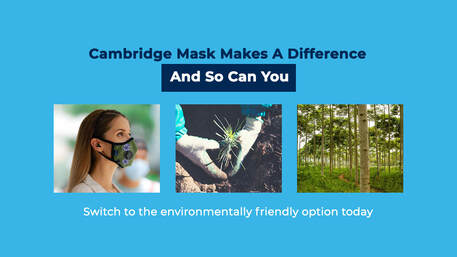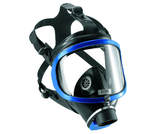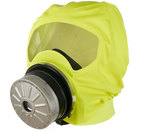
When it comes to just about any toxic and/or oil-based
substance, the only professional option for good protection is a respirator. You’ll know a true respirator because they’re much sturdier and are almost always made of plastics and rubbers. Respirators, however, are not all created equal, and there are a few things to look at closely when purchasing. 1. Not all respirators protect against everything. In fact, few respirators do and most are made to protect a user against one, two or "a few " substances or germs etc. Always consult the company's guidelines and try to get a respirator that is appropriate for what you are working with. Some things that specific respirators are made for include spray paint, pesticides, fiberglass particles, ammonia, acids and other gases - but may not filter other substances.
2. Some respirators allow only one type of “cartridge” (or none, for the few disposable kinds), while others are “stack-able” or interchangeable. If you think you might need to be protected against multiple kinds of toxic materials, you’ll probably want one that’s stackable (or at the least interchangeable), while single-cartridge types are fine if you’re just going to be exposed to one thing. The only 100% protection is possible by wearing a hazmat suit with integrated CO cartridges and pressurized O2 - that way the wearer is cut off from the environmental pollution and safe. Since that is not very well possible, we highly recommend that you invest in a fullface respirator with cartridges, which would give you protection in the case of fume events (cockpit crew have their O2 full-face masks). Please check out specialized companies such as 3M, Dräger and Honeywell. A couple of suggestions by Dräger, given to us upon requesting information and help regarding choice of masks, can be viewed further down. Things you should know: Colour coding of filters Example: The appropriate colour code would be, according to the contaminants we know about:
Go to : Filter Selection Guide for more examples. Most of the above suggested masks can be purchased at AMAZON or of course directly vie Dräger. Personally we would, in addition, carry a foldable mask on our body (pocket) for the emergency case, to pop on while fetching the full-face respirator out of your flight bag. A wider list of contaminants is offered by Dräger VOICE 5.0 database of hazardous substances. With Dräger VOICE, you have the unique option to search for approx. 1,750 contaminants and their chemical properties in a compact database. www.draeger.com/voice (©source) Note: no affiliation with Dräger - however we sought their advice.
|
A message from Christopher Dobbing, Founder/ CEO CambridgeMask Co.:
"With regard to our carbon filter materials, I believe there is some need for clarification over why the material performs differently to a regular granular carbon cloth. The filters we use are 100% pure activated carbon cloth which is broken down into a yarn then spun into a cloth. If you were to have a carbon powder with the same particle size as the filament diameter as the cloth, the adsorption characteristics would be pretty much the same. The only thing would be that you would not be able to breathe through the powder, because the pressure drop would be so high. The key differentiator with our filters is that it allows very fast adsorption kinetics at a very low pressure drop. Hence you can make a viable gas filter out of just one or two layers other than a thick bed. The larger the carbon particle size, the lower the kinetics, but also the lower the pressure drop. The challenge for filter designers when using granular carbon is to balance the bed depth, the grain size and the pressure drop in order to get the required properties for the filter. With regard to exactly which pollutants are filtered by the carbon cloth, a general rule of thumb is that chemicals that boil above 65 deg C are easily removed by unimpregnated carbon. Organophosphates are easy to remove. Silver acts as a catalyst for removing arsen and phosphine. For particulate pollution, you can see from the N99 report form Nelson Lans that our masks are proven under NIOSH 42 CFR to filter 99.7%+ of particulate matter down to 0.3 microns. Additionally, we tested for viral and bacterial filtration, and filter 99.6 and 99.6 percent respectively." (quote) Order your Mask - don't forget the code AEROMASK18 for a 10% reduction on check-out! |
- HOME
- What are Fume Events?
- Unfiltered - contents of fumes
- Evidence
- CREW mask info
- The Scent of Flying Free EBook
- Chemicals With Wings
- Debate so far
- Passenger Videos
-
Filtration Expert Articles
- Ti-DOX HydroxylizAire “
- AIRBUS Filtration Problems Dec.8/1988
- Contaminated air in airliner cabins
- ASHRAE Introduction to Passenger Aircraft Cabin Air
- Aeronautical Engineering Prof. Dr.-Ing Dieter Scholz
- Horizon 2020 Breath of Fresh Air
- Patent Air Conditiong System air or rail
- Airbus Cabin Air Explanations
- Airline CEO's Obsession
- Filtration Efficiency Claims: Misleading?
- HEPA Technology Tested
- Forgotten Pollution: Cabin Air Quality
- Flying despite Corona?
- PETITION
- MEDICAL HEALTH CONCERNS at Altitude, Fumes & Vaccinations
- Disinsection
- UPDATES & NEWS
- Press Conference Airplane Safety Legislation Toxic Fumes
- AKADEMIA
- HOME
- What are Fume Events?
- Unfiltered - contents of fumes
- Evidence
- CREW mask info
- The Scent of Flying Free EBook
- Chemicals With Wings
- Debate so far
- Passenger Videos
-
Filtration Expert Articles
- Ti-DOX HydroxylizAire “
- AIRBUS Filtration Problems Dec.8/1988
- Contaminated air in airliner cabins
- ASHRAE Introduction to Passenger Aircraft Cabin Air
- Aeronautical Engineering Prof. Dr.-Ing Dieter Scholz
- Horizon 2020 Breath of Fresh Air
- Patent Air Conditiong System air or rail
- Airbus Cabin Air Explanations
- Airline CEO's Obsession
- Filtration Efficiency Claims: Misleading?
- HEPA Technology Tested
- Forgotten Pollution: Cabin Air Quality
- Flying despite Corona?
- PETITION
- MEDICAL HEALTH CONCERNS at Altitude, Fumes & Vaccinations
- Disinsection
- UPDATES & NEWS
- Press Conference Airplane Safety Legislation Toxic Fumes
- AKADEMIA
Unfortunately, we are not able to provide personalized advice to individuals on diagnosis, treatment and professional and/or legal issues. However, you will find all the information you need on these pages. We thank you for your understanding and hope that the materials on this site will help answer your questions.
Disclaimer: I am not a medical doctor but a concerned citizen collating research. The provided information should be double checked by everyone according to their personal circumstances before embarking on any treatment in consultation with their personal doctor who knows about the discussed subject and their medical history. Please make sure to present the three downloadable documents HERE for your doctor's information. This is an effort to share what I have learnt by reading many scientific and medical journals on this subject and my own experience and health journey following expsoure to fume events and onboard aerosol pesticide spraying.
Disclaimer: I am not a medical doctor but a concerned citizen collating research. The provided information should be double checked by everyone according to their personal circumstances before embarking on any treatment in consultation with their personal doctor who knows about the discussed subject and their medical history. Please make sure to present the three downloadable documents HERE for your doctor's information. This is an effort to share what I have learnt by reading many scientific and medical journals on this subject and my own experience and health journey following expsoure to fume events and onboard aerosol pesticide spraying.
All Rights Reserved © Bearnairdine Beaumont
UNFILTERED formerly known as "Aerotoxic Team" the Global Network
2013 - 2026
Latest update 26. May, 2024
music: © https://acousticevolution.bandcamp.com/track/gentle-ascent
UNFILTERED formerly known as "Aerotoxic Team" the Global Network
2013 - 2026
Latest update 26. May, 2024
music: © https://acousticevolution.bandcamp.com/track/gentle-ascent





